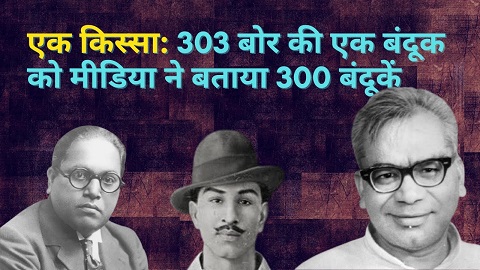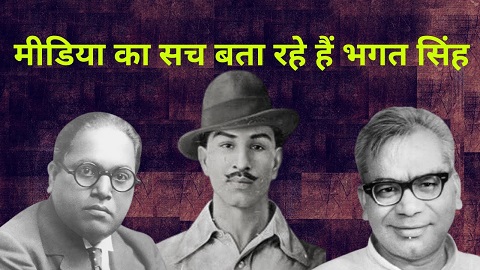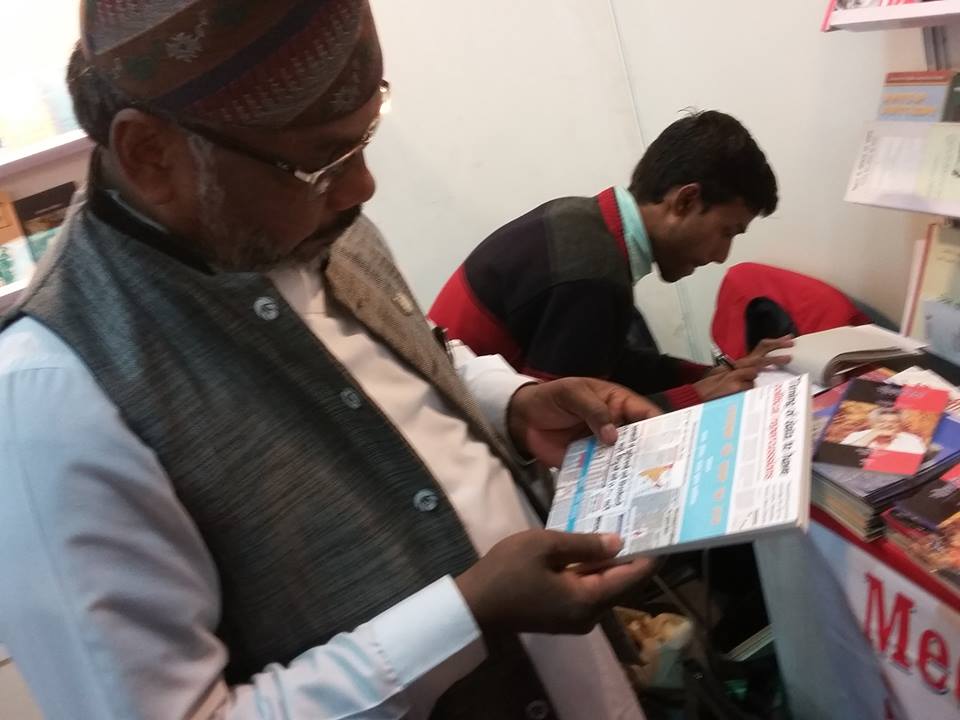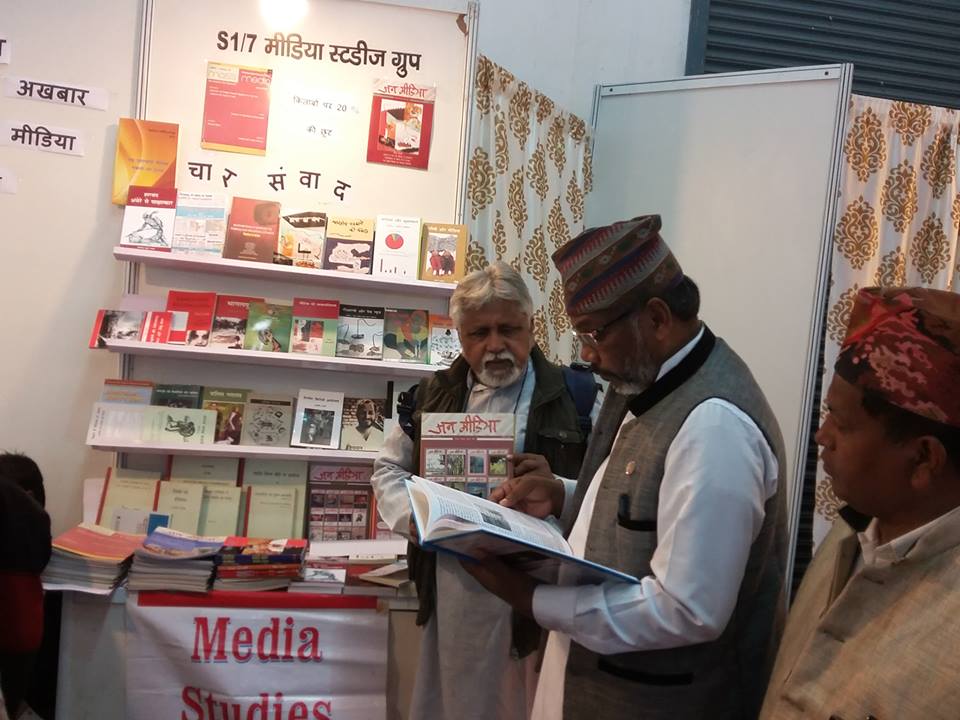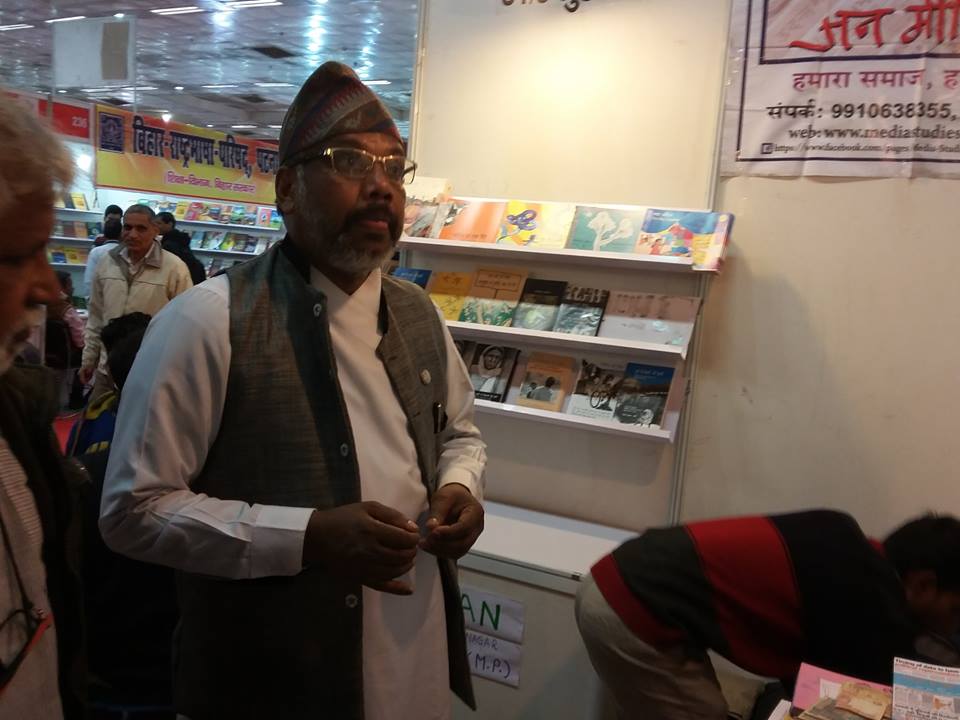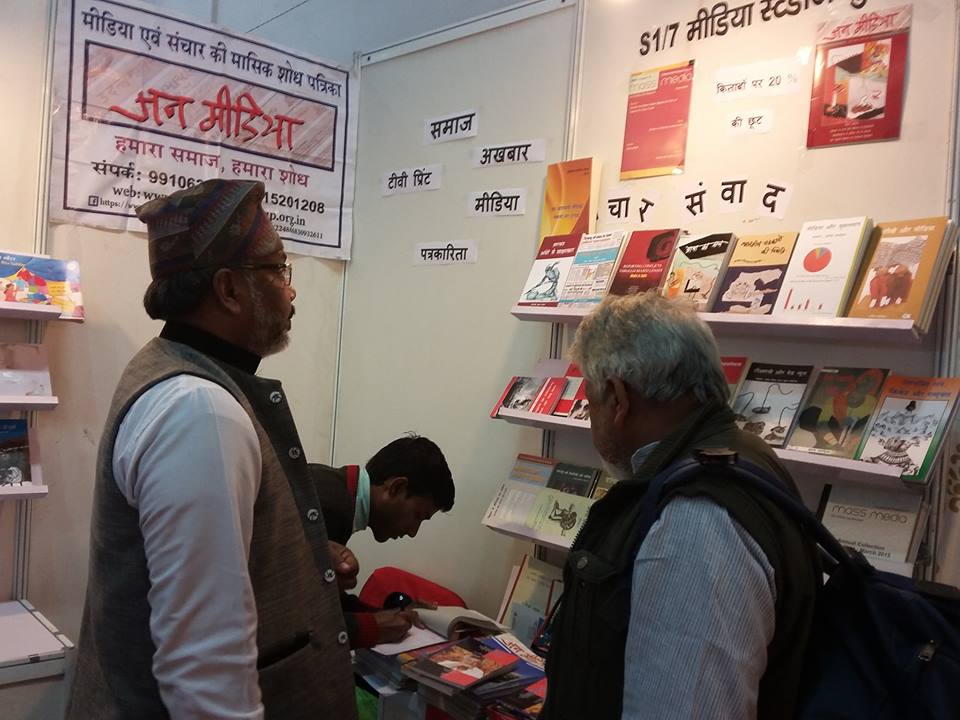Next in the series by Hemendra Narayan relates to a sportsman. It however deals with a tragedy. Again it falls in the genre of ‘follow up” journalistically speaking. It got going with the reporters instinctive- research and investigation for a news story way back in January 1981 a heartbreaking saga of Pan Singh Tomar.
Narayan did three stories –two for UNI and another for the Indian Express. The content of stories- one of them being an interview – the only by Pan Singh while absconding – has been even discussed in quality reviews of much acclaimed film.
For reporters in Chambal area dacoits have always been a popular subject of stories. Stationed at Gwalior in 1979 young journalist Narayan also researched this societal tendency. A Bhopal datelined newspaper article discussing the dacoit scenario in the region mentioned in passing about an athlete who had turned into a dacoit. It alerted Narayan’s reporter’s intuition.
He worked on the Pan Singh’s background culling information from the fugitive’s relatives, police and other sources including former dacoits. However, for days, he sat on it, as no one knew the event for which Pan Sight held the national record for fifteen years. One could say that research on the subject was complete and the story was good enough to be filed. But with the striking detail missing it was half baked, to so say the least. Isn’t the adage for the reporters is to ‘find it out.’ So Narayan was more than willing to give himself some time. In the hindsight it was worth the wait.
Pan Singh’s coach solves the problem;
In January 1981 an athletic event at Gwalior brought sportsperson and coaches together. Two three sportsmen failed to recall Pan Singh. It was the coach Joginder Singh Saini, who solved the problem for Narayan. Saini knew that that Pan Singh, one of his favourite disciples, had turned into a dacoit. “The last watch I was using was presented to me by Pan Singh. He had brought it for me from Tokyo. It is so sad that he has turned into a dacoit”, Saini had reminisced pointing to his wrist and remembered him for agility and stamina. The energy sapping event 3000 metres steeplechase almost fitted into the scenario.
The report filed by Narayan. The personality and the evolution of Pan Singh were in the public domain for the first time. Almost by all papers on the country and in the local Hindi newspapers carried the story. Fortunately, Narayan has a copy of the report published in newspapers of January 31, 1981. As an aside, the UNI in those years had incentive scheme for good stories. For the story of the month Narayan’s effort picked a reward of Rs 500!
===
A newspaper carried the story with the headline -“Ex-Army athlete turns dacoit” another had catchier headline – Athlete Races to Chambal”
GWALIOR, January 30 (UNI): Pan Singh Tomar, the national record holder in 3000-metre steeplechase for fifteen years is now the leader of second most dreaded gang of dacoits in the Chambal after Malkan Singh.
Carrying a prize of Rs 10,000 on his head, the broad faced and sturdy athlete is wanted in a half dozen cases of murder and about 30 kidnappings committed in the last 22 months. But the transition from Spartan tracks of racing to the tortuous tracks of Chambal was not intentional. Like most dacoits, the 49-year old former Army Subedar was the victim of social injustice.
Deceitfully implicated in a dacoity in 1973, two years after a 22-year service in the Army, which joined at the age of 17, Pan Singh absconded. Thereafter a series of incidents embittered Pan Singh against society and he embarked on path of crime.
One of the dacoit’s relative, a police inspector persuaded him to surrender his licensed Springfield rifle.
Earlier Pan Singh had to fight a court case while still in service. Some persons of his village Bhiroso under Sohania police station in Morena district bordering Rajasthan, filed a case against his possession of the licensed rifle.
But Pan Singh’s trouble did not end there. Another relative Babu Singh encroached upon his land. When he resisted he was beaten up and his nubile daughter insulted and her ornaments looted.
When Pan Singh approached the police for justice, he was snubbed. The police even refused to register his complaint against Babu Singh; who instead, managed to lodge a false complaint against Pan Singh, because of his influence. Even the panchayat’s decision against Babu Singh failed to get Pan Singh’s land vacated. ‘Had the police registered his complaint Pan Singh may not have turned a dacoit,” a relative said.
Frustrated in his attempt to get justice, Pan Singh gunned down Babu Singh in broad daylight in March 1979 and took refuge in the ravines of the Chambal. His elder brother Matadin a former Army havildar and his nephew Hanuman then joined him.
Totting a sten gun in his skilled hands the rugged athlete now heads a gang of l5 desperadoes.
Not content with the murder of his principal provocateur, Babu Singh, Pan Singh shot two of Babu Singh’s sons in August last year. But two months later he lost his brother Matadin in an encounter with the police in Gwalior district.
According to police reports, Pan Singh, father of a son who is in Army and a daughter married early last year at Jhansi has now vowed to avenge his brother’s death by wiping out the Gujjars of the village who allegedly intimated the presence of his gang to the police. The terror-stricken Gujjars meanwhile have fled the village and taken refuge in Gwalior city.
Pan Singh who mostly indulges in kidnapping for ransom is reported to have collected Rs one lakh a piece by kidnapping a village sarpanch and a teacher recently.
‘Despite full scale drive against the dacoits launched by the government, the former long distance runner, who is still fondly remembered by his coach, J S Saini, for his agility and stamina, continues to elude the police.
 Narayan’s Pan Singh’s dramatic Interview:
Narayan’s Pan Singh’s dramatic Interview:
Narayan does not remember the exact date but in March 1981 the late evening phone call was a bolt from the blue. An old source offered a meeting with ‘A 9’- Absconder number nine, as police listed Pan Singh Tomar. The offer was naturally exciting as it would be for any journalist and Narayan remembers to have cautioned the caller not to discuss any further details over telephone and instead asked him to come over to the UNI’s office cum residence in Lalitpur Colony.
Narayan reached the labour quarters of the Birla Cotton Mill where Pan Singh had taken refuge. Gwalior was town of three wheelers for commuting point-to-point movement. It was definitely not a scooter for neither Narayan or his contact owed one. In the film incidentally the journalist is shown to be using a scooter.
The meeting with Pan Singh in the small dark room was short. The build up was striking. He continuously played with a cartridge with is long fingers which added to the abnormal ambience. Pan Singh did not get up from his cot. A regular gun was lying beside him. Clad in pyjama and kurta, the sturdy athlete Pan Singh started the talk in a disheartening tone. “As an international athlete I had given interviews as a hero. Today I am depicted as a criminal”, Pan Singh said.
Narayan today cannot vouchsafe but wonders if what he said was in reference to the detailed story published in many newspapers including Hindi of the region, less than two months ago, on January 31.
Today as Narayan recalls the interview a question crops up. Did Pan Singh give consent for the interview to explain to the outside world about the mistake in killing of the Gujjars.
The contact stood beside Narayan and Pan Singh who carried a reward of Rs 10,000 appeared safe in Gwalior. However, the exposure to an unknown outsider was risky and Pan Singh did not want to prolong the meeting. As Narayan and his contact parted, there was a threat, directed towards both but more pointed to the contact. Rotating the cartridge, he said in local dialect, “if anything goes wrong he would be dealt first with him and then newspaper man”.
Obviously Narayan did not file a story immediately. The police would have been after him and the contact. Narayan did file a story based on the meeting for UNI about one and half months later with a typical dateline- “Somewhere in Chambal valley” as a cover. It appeared in newspapers, a day after Narayan had left Gwalior for Patna. He remembers to have told by Gwalior friends that the police was looking for him.
=====
Narayan filed another story after Pan Singh’s death months after he had left Gwalior. At that time there was no breaking news on the TV screens. Narayan heard about the news over All India Radio in the afternoon far away in Patna and reacted as an alert newsman to do an obit type article which included his past and excerpts of the interview for the Indian Express after police had killed him in an elaborate operation on October 2, 1981.
Here is Narayan’s story for the benefit of the readers:
Why Pan Singh took to Chambal
By Hemendra Narayan
Express News Service
Patna Oct 2: Former International athlete turned –dacoit Pan Singh Tomar who was killed in an encounter with police near Gwalior on Friday had something interesting to say when approached for an interview in March by this Correspondent who was working at Gwalior at that time.
“As an international athlete I had given interviews as a hero. But now I am depicted as a criminal in the newspapers”, said Pan Singh.
It was just a week after his gang had committed the worst crime of killing five Gujars in the twin village of Pawa-Pawata in Gwalior district on March 13.It was a revenge . Exactly a month ago Pan Singh’s brother Matadin also a former army man was killed in an encounter after the Gujars had tipped off police about his whereabouts.
Clad in pyjama and Kurta with a gun beside him the six foot former jawan was lying on a cot in dark, dingy room in one of the quarters of Birla Cotton mill in Gwalior. On the wall hung another gun, which he said belonged his nephew.
Throughout the short interview the dacoit who carried a reward of Rs 10,000 on his head toyed with a bullet. He was sorry that wrong people had been killed by his gang at the village . “I could not restrain my nephew who was angry about his father’s death. You can understand his feelings’, he said in touching soft voice.
Interestingly the meeting was just six hours after the Gwalior police Superintendent Mr Ram Lal Verma in his office said he wished Pan Singh was in his area. “He has fled to Rajasthan after the killings at Pawa-Pawata “, Mr Verma said. So much for police intelligence, on dacoits.
The parting words of the dacoit was a threat. Pan Singh told this correspondent’s contact that if anything went wrong (the contact) would be dealt with first and then newspaper man.
The transition for Tomar in whose name the stood the national record in 3,000 metres steeplechase for 15 years from spartan tracks to tortuous terrain of the Chambal ravines was not intentional. Like most dacoits the former international athlete and Subedar (Retd.) of the Roorkee Engineering Group was a victim of social injustice.
A series of incidents embittered Pan Singh against society and he embarked on the path of crime. With his death on Friday, the Gwalior police will not need the code “A-nine” where “A” stands for absconder, which stood in his name for last 31 months. The turning point for Pan Singh was when Babu Singh, a relative encroached on his land in Bhirosa village in Morena district. When Pan resisted, he was beaten up and his nubile daughter insulted and her ornament looted. When Pan Singh approached the police they sided with Babu Sigh. Later Pan Singh killed Babu Singh and absconded.
—-
Ethical Question
Journalistically in Narayan’s series on Pan Singh brings forth his diligence and alertness as a reporter. Another question that ensues from the story about interview with a fugitive. The police could have perused Narayan to the court for his interview with Pan Singh.
Editors and journalist do insist that a “source” needs to be protected. Recently debate has cropped up especially with journalist reporting about extreme left groups in different parts of the country. While some journalists have been arrested and in some cases tagged as collaborators. In some instances genuine journalistic efforts has come in handy for the authorities to book them.
(PS : Hemendra Narayan has retained the spelling as Pan Singh rather than the one in film. One would not be sure as to how his name was spelled in the Army records.)



